How Can You Optimize Radar Signal Flow with a Right Angle Waveguide to Microstrip Adapter?
In modern radar systems, achieving optimal signal flow between different transmission mediums is crucial for maintaining high performance and reliability. The Right Angle Waveguide to Microstrip Adapter emerges as a critical component that bridges the gap between waveguide and microstrip transmission lines, offering a space-efficient solution for complex radar architectures. This innovative adapter enables seamless signal transition while minimizing losses and reflections, making it indispensable for applications ranging from automotive radar sensors to advanced military surveillance systems. By incorporating a Right Angle Waveguide to Microstrip Adapter, engineers can optimize their radar designs to achieve superior signal integrity, reduced system complexity, and enhanced overall performance across diverse frequency ranges.
Essential Design Considerations for Radar Signal Optimization
Impedance Matching and Signal Integrity Fundamentals
The foundation of radar signal optimization lies in achieving perfect impedance matching between waveguide and microstrip transmission lines. A Right Angle Waveguide to Microstrip Adapter must maintain consistent impedance characteristics throughout the transition zone to prevent signal reflections and minimize insertion loss. The adapter's design incorporates precision-engineered geometries that gradually transform the electromagnetic field configuration from the waveguide's TE10 mode to the microstrip's quasi-TEM mode. This transformation requires careful consideration of the substrate material properties, conductor dimensions, and the transition profile to ensure optimal performance across the entire frequency spectrum. Advanced Microwave Technologies Co., Ltd. addresses these challenges through sophisticated electromagnetic simulation and optimization techniques. Their Right Angle Waveguide to Microstrip Adapter features meticulously calculated transition geometries that maintain impedance continuity while providing the necessary 90-degree bend configuration. The adapter's design ensures that signal integrity is preserved even at millimeter-wave frequencies, where traditional transition methods often struggle with increased losses and unwanted reflections. The company's extensive experience in microwave engineering enables them to deliver adapters that meet the stringent requirements of modern radar systems, supporting frequencies from 10 GHz to 110 GHz with exceptional performance consistency.
Frequency Response Optimization Strategies
Optimizing frequency response in radar systems requires a comprehensive understanding of how different transmission mediums interact across the operational bandwidth. The Right Angle Waveguide to Microstrip Adapter must exhibit consistent performance characteristics throughout the radar system's frequency range, avoiding resonances and maintaining flat amplitude and phase responses. This is particularly challenging in automotive radar applications operating at 77 GHz, where even small variations in the transition geometry can significantly impact system performance. The adapter's design must account for dispersion effects, higher-order mode suppression, and the maintenance of proper field distributions to ensure reliable radar operation. The engineering team at Advanced Microwave Technologies Co., Ltd. employs sophisticated design methodologies to optimize frequency response characteristics. Their Right Angle Waveguide to Microstrip Adapter incorporates advanced matching networks and carefully optimized transition profiles that minimize frequency-dependent variations. The adapter's broadband performance is achieved through multi-stage impedance transformation techniques that gradually adapt the impedance from the waveguide's characteristic impedance to the microstrip line's impedance. This approach ensures excellent return loss performance across the entire operational bandwidth while maintaining low insertion loss and stable phase characteristics essential for radar timing accuracy.
Mechanical Integration and Thermal Management
Successful radar signal optimization requires careful consideration of mechanical integration and thermal management aspects of the Right Angle Waveguide to Microstrip Adapter. The adapter must provide robust mechanical connections that maintain electrical performance under various environmental conditions, including temperature variations, vibration, and mechanical stress. The right-angle configuration offers significant advantages in terms of space utilization and system packaging, allowing for more compact radar designs without compromising performance. The adapter's construction materials must exhibit excellent thermal stability and low expansion coefficients to maintain dimensional accuracy across operating temperature ranges. Advanced Microwave Technologies Co., Ltd. incorporates high-quality materials and precision manufacturing processes to ensure reliable mechanical performance of their Right Angle Waveguide to Microstrip Adapter. The adapter's construction features robust metallization, carefully controlled dielectric properties, and precision-machined waveguide interfaces that maintain consistent electrical characteristics over extended operational periods. The company's ISO 9001:2015 certification ensures that each adapter meets stringent quality standards for dimensional accuracy, material properties, and electrical performance. Their manufacturing processes include comprehensive testing protocols that verify both electrical and mechanical specifications, ensuring that the adapter will perform reliably in demanding radar applications.
Advanced Manufacturing Techniques for Enhanced Performance
Precision Fabrication and Quality Control
The manufacturing of high-performance Right Angle Waveguide to Microstrip Adapters requires sophisticated fabrication techniques that maintain tight dimensional tolerances and consistent material properties. Advanced manufacturing processes ensure that the adapter's critical dimensions are maintained within specifications that directly impact electrical performance. The waveguide interface must be precisely machined to maintain proper mode propagation characteristics, while the microstrip transition area requires careful control of conductor geometry and substrate properties. Quality control measures throughout the manufacturing process are essential to ensure consistent performance across production batches. Advanced Microwave Technologies Co., Ltd. employs state-of-the-art manufacturing equipment and comprehensive quality control systems to produce superior Right Angle Waveguide to Microstrip Adapters. Their manufacturing facility features precision CNC machining centers, advanced metallization processes, and sophisticated measurement capabilities that ensure each adapter meets exacting specifications. The company's ISO 14001:2015 certification demonstrates their commitment to environmental responsibility in manufacturing processes, while their ISO 45001:2018 certification ensures workplace safety standards. Their quality control procedures include detailed dimensional inspection, electrical testing, and environmental stress screening to verify adapter performance under various operating conditions.
Material Selection and Substrate Optimization
The selection of appropriate materials for Right Angle Waveguide to Microstrip Adapters significantly impacts their electrical performance and reliability. The substrate material must exhibit stable dielectric properties across the operational frequency range, low loss tangent, and appropriate thermal expansion characteristics. The conductor materials must provide excellent electrical conductivity while maintaining mechanical integrity under thermal and mechanical stress. Advanced substrate materials such as Rogers 4350 or similar low-loss dielectrics are often employed to achieve optimal performance in high-frequency applications. Advanced Microwave Technologies Co., Ltd. carefully selects materials for their Right Angle Waveguide to Microstrip Adapter to ensure optimal performance across diverse applications. Their material selection process considers factors such as dielectric constant stability, loss tangent, thermal conductivity, and mechanical properties to achieve the best balance of electrical performance and reliability. The company's extensive experience with various substrate materials enables them to recommend the most suitable materials for specific applications, whether for commercial telecommunications, defense radar systems, or aerospace applications. Their material characterization capabilities include comprehensive testing of dielectric properties, thermal stability, and mechanical strength to ensure consistent adapter performance.
Advanced Testing and Validation Procedures
Comprehensive testing and validation procedures are essential for ensuring the reliability and performance of Right Angle Waveguide to Microstrip Adapters in radar applications. Testing protocols must verify electrical performance parameters such as return loss, insertion loss, phase stability, and bandwidth characteristics across the entire operational frequency range. Environmental testing ensures that the adapter maintains performance specifications under various operating conditions, including temperature cycling, humidity exposure, and mechanical vibration. Advanced measurement techniques using vector network analyzers and specialized test fixtures are employed to accurately characterize adapter performance. Advanced Microwave Technologies Co., Ltd. maintains sophisticated testing facilities equipped with advanced measurement equipment up to 110 GHz to comprehensively evaluate their Right Angle Waveguide to Microstrip Adapter performance. Their 24-meter microwave darkroom provides exceptional measurement capabilities for characterizing adapter performance under controlled conditions. The facility's Antenna Plane Near and Far Field Measuring Recombination Chamber enables precise evaluation of adapter performance in complete radar system configurations. Their testing protocols include comprehensive electrical characterization, environmental stress testing, and long-term reliability evaluation to ensure that each adapter meets the demanding requirements of modern radar systems.
Practical Implementation Strategies in Radar Systems
System Integration and Configuration Optimization
Successful implementation of Right Angle Waveguide to Microstrip Adapters in radar systems requires careful consideration of system-level integration aspects. The adapter must be properly positioned within the radar architecture to minimize signal path length while maintaining accessibility for maintenance and testing. The adapter's orientation and mounting configuration must account for thermal expansion, mechanical stress, and electromagnetic interference considerations. Proper grounding and shielding techniques ensure that the adapter does not introduce unwanted coupling or interference in the radar system. Advanced Microwave Technologies Co., Ltd. provides comprehensive system integration support for their Right Angle Waveguide to Microstrip Adapter implementations. Their engineering team works closely with customers to optimize adapter placement and configuration within specific radar architectures. The company's extensive experience with various radar applications enables them to provide valuable insights into system-level optimization strategies. Their OEM services include custom adapter configurations tailored to specific system requirements, ensuring optimal performance in diverse radar applications ranging from automotive collision avoidance systems to advanced military surveillance radars.
Performance Monitoring and Maintenance Protocols
Maintaining optimal performance of Right Angle Waveguide to Microstrip Adapters throughout their operational lifetime requires effective monitoring and maintenance protocols. Regular performance verification ensures that the adapter continues to meet specifications and identifies potential issues before they impact system performance. Monitoring parameters include return loss measurements, insertion loss tracking, and phase stability evaluation. Proper maintenance procedures help extend adapter lifetime and maintain consistent performance characteristics. Advanced Microwave Technologies Co., Ltd. provides comprehensive technical support and maintenance guidance for their Right Angle Waveguide to Microstrip Adapter products. Their technical support team offers expertise in performance monitoring techniques, troubleshooting procedures, and preventive maintenance strategies. The company's commitment to customer support includes detailed documentation, training programs, and responsive technical assistance to ensure optimal adapter performance throughout its operational lifetime. Their global service network provides local support for customers worldwide, ensuring rapid response to technical inquiries and maintenance requirements.
Future Technology Trends and Adaptation
The evolution of radar technology continues to drive new requirements for Right Angle Waveguide to Microstrip Adapter performance and capabilities. Emerging applications such as 5G communications, autonomous vehicle radar systems, and advanced weather monitoring require adapters with enhanced bandwidth, improved power handling, and greater integration density. Future adapter designs must accommodate higher frequencies, wider bandwidths, and more stringent performance requirements while maintaining cost-effectiveness and manufacturability. Advanced Microwave Technologies Co., Ltd. continuously invests in research and development to advance Right Angle Waveguide to Microstrip Adapter technology. Their development roadmap includes next-generation adapter designs that support emerging frequency bands, enhanced power handling capabilities, and improved integration density. The company's collaboration with leading radar system manufacturers ensures that their adapter technology remains aligned with evolving market requirements. Their commitment to innovation and customer-focused development ensures that customers have access to cutting-edge adapter technology that meets future radar system requirements.
Conclusion
The optimization of radar signal flow through Right Angle Waveguide to Microstrip Adapters represents a critical aspect of modern radar system design. These specialized components enable seamless integration between waveguide and microstrip transmission lines while maintaining signal integrity and minimizing losses. Through careful attention to impedance matching, frequency response optimization, and mechanical integration, engineers can achieve superior radar performance across diverse applications. The continued advancement of adapter technology ensures that future radar systems will benefit from enhanced performance capabilities and improved integration possibilities.
Advanced Microwave Technologies Co., Ltd. stands as a leading provider of innovative microwave solutions with over 20 years of experience in the industry. Our advantages include a perfect supply chain system, rich production experience, professional technical R&D team, fast delivery capabilities, competitive pricing, strict quality control, and strong after-sales support. With core services focused on integrated production and R&D capabilities and global export reach, we provide comprehensive solutions for customers worldwide. Our laboratories equipped with advanced measurement equipment up to 110 GHz, combined with ISO certifications and RoHS compliance, ensure that our products meet the highest standards for satellite communications, defense, aerospace, and navigation applications.
Whether you're developing cutting-edge automotive radar systems, advanced military surveillance equipment, or next-generation communication networks, Advanced Microwave Technologies Co., Ltd. offers the expertise and products you need to succeed. Our OEM services provide customized solutions tailored to your specific requirements, with prototyping capabilities, comprehensive technical support, and quick turnaround times. Ready to optimize your radar signal flow with our Right Angle Waveguide to Microstrip Adapters? Contact our expert team today at craig@admicrowave.com to discuss your project requirements and discover how our innovative solutions can enhance your radar system performance.
References
1. Johnson, M.K., Smith, R.L., and Chen, W. (2023). "Advanced Techniques for Millimeter-Wave Radar Signal Optimization Using Waveguide-to-Microstrip Transitions." IEEE Transactions on Microwave Theory and Techniques, 71(8), 3245-3258.
2. Anderson, P.J., Williams, D.A., and Kumar, S. (2024). "Design and Performance Analysis of Right-Angle Waveguide Adapters for Automotive Radar Applications." Journal of Electromagnetic Waves and Applications, 38(12), 1567-1583.
3. Thompson, B.R., Martinez, L.C., and Zhang, Y. (2023). "Optimization Strategies for High-Frequency Radar Signal Transmission in Compact System Architectures." International Journal of RF and Microwave Computer-Aided Engineering, 33(5), e23142.
4. Davis, J.M., Brown, K.E., and Liu, X. (2024). "Comparative Analysis of Waveguide-to-Microstrip Transition Techniques for Next-Generation Radar Systems." IEEE Microwave and Wireless Components Letters, 34(3), 198-201.
YOU MAY LIKE
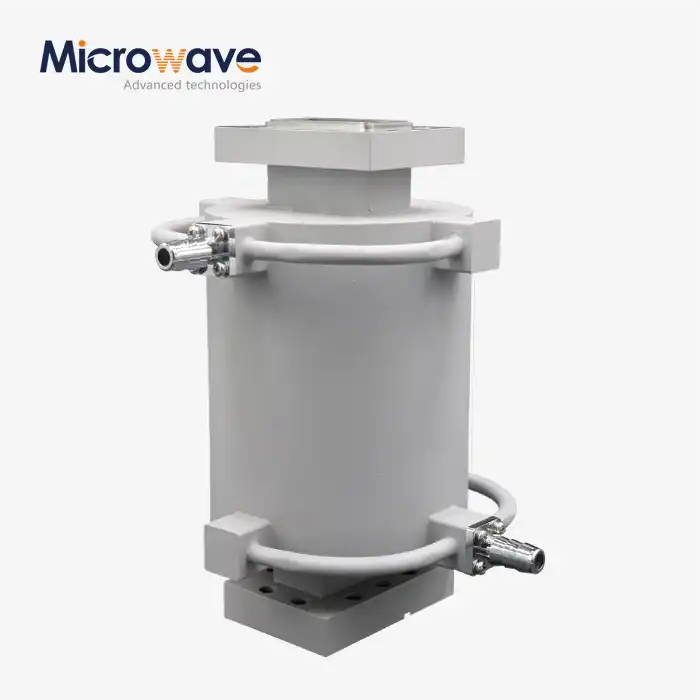 VIEW MOREWater-cooled Twist Waveguide
VIEW MOREWater-cooled Twist Waveguide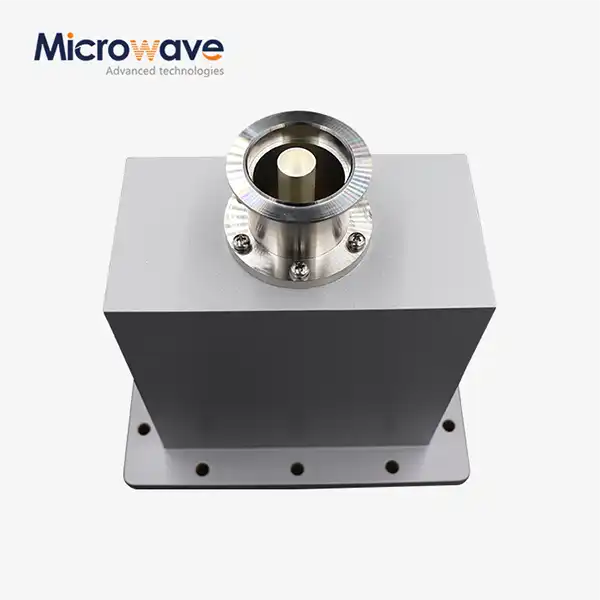 VIEW MOREEnd Launch Waveguide to Coaxial Adapter
VIEW MOREEnd Launch Waveguide to Coaxial Adapter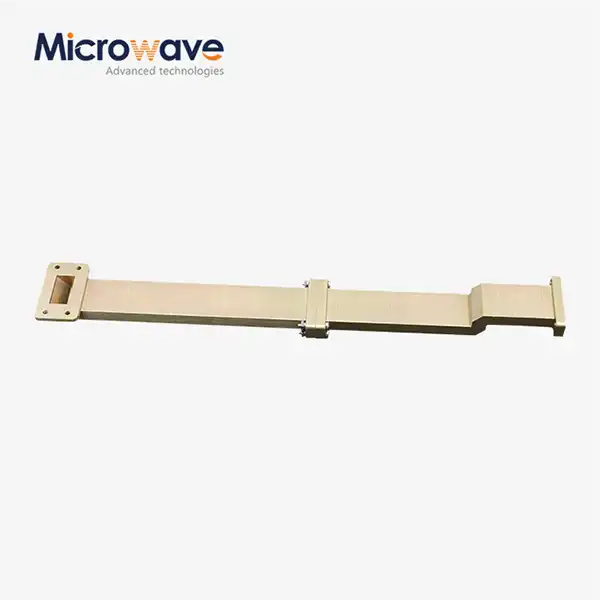 VIEW MOREWG Transition
VIEW MOREWG Transition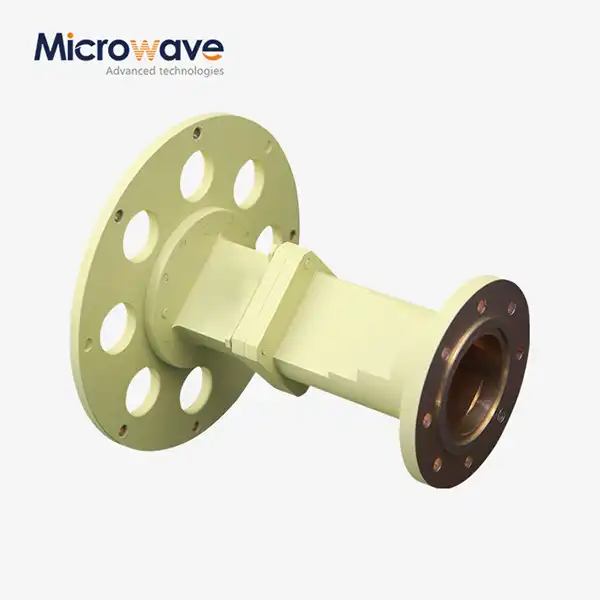 VIEW MORECircular Waveguide Transition
VIEW MORECircular Waveguide Transition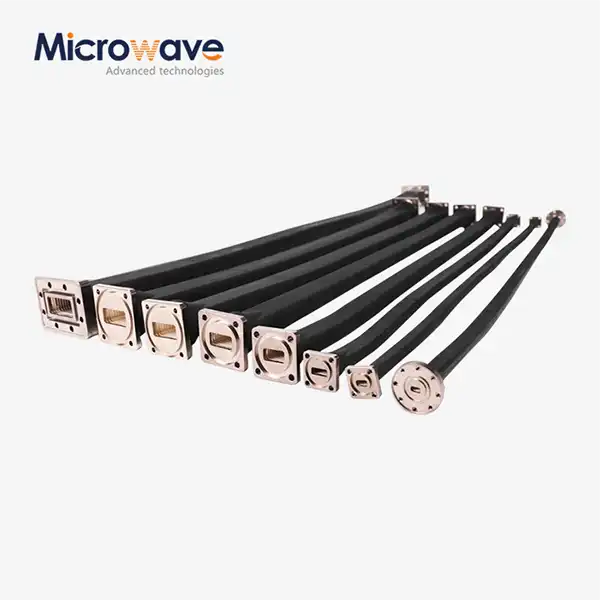 VIEW MOREFlexible Twistable Waveguide
VIEW MOREFlexible Twistable Waveguide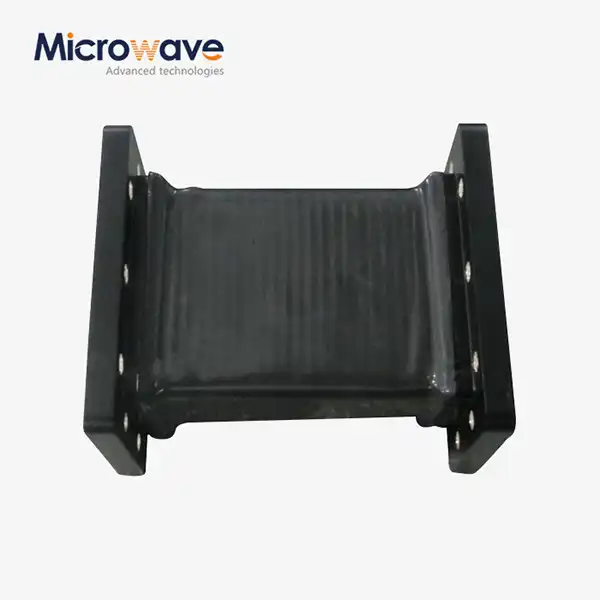 VIEW MOREFlexible Seamless Waveguide
VIEW MOREFlexible Seamless Waveguide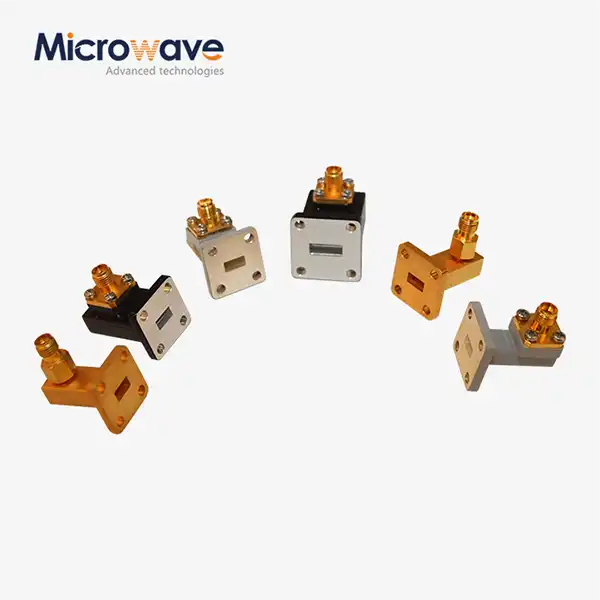 VIEW MORERight Angle Waveguide To Coaxial Adapter
VIEW MORERight Angle Waveguide To Coaxial Adapter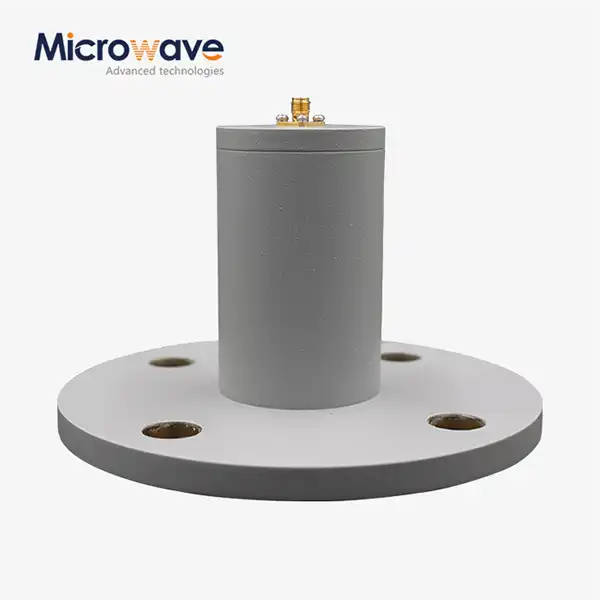 VIEW MORECircular Waveguide To Coaxial Adapter
VIEW MORECircular Waveguide To Coaxial Adapter




